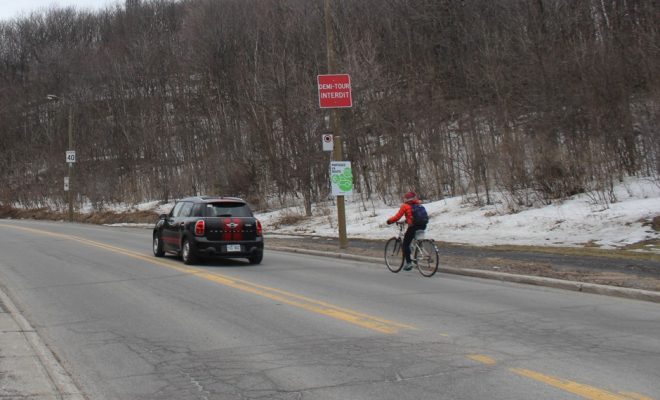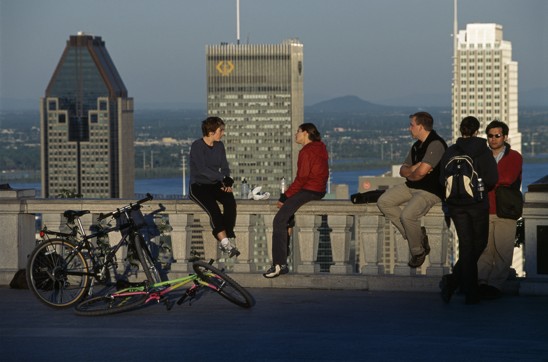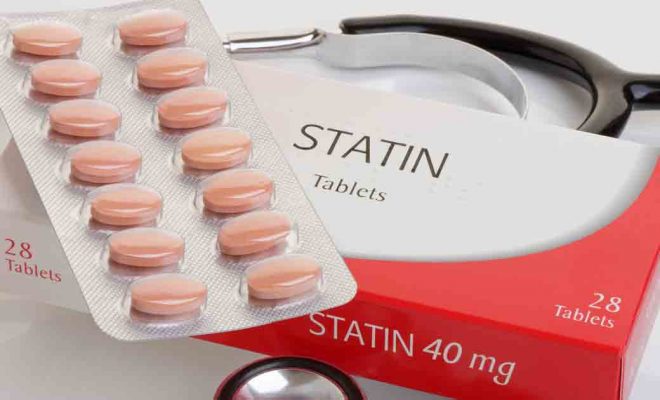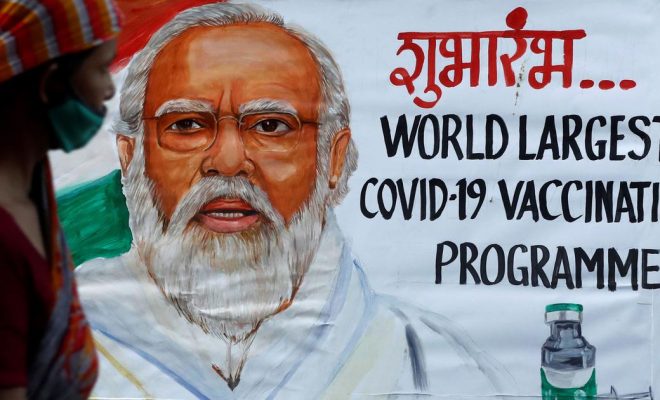Montreal Tried to Close a Popular Park to Drivers. Why Didn’t It Work?

Ouimet was following an SUV down the mountainside when the driver, an American tourist, pulled an illegal U-turn; the cyclist collided with the vehicle, suffering a fatal head injury. No charges were filed, but repercussions from the incident continue to reverberate through Montreal. The crash occurred roughly a month before that year’s municipal elections, bringing cyclist safety—and a host of related issues—to the fore. Montrealers would vote for a change that fall, electing the city’s first woman mayor, Valérie Plante, and a slate of lawmakers from Projet Montréal, a grassroots social-democratic party with a platform of sustainable urban development initiatives.
What began as a benign traffic study snowballed into allegations the new mayor was “anti-car” and that her party had a radical environmentalist agenda. Despite the city’s well-deserved bike-friendly reputation, other opponents of the traffic study—many of them hailing from Montreal’s suburbs—argued that motorists were being unfairly punished for a single accident. Some argued further still that the city was prioritizing the needs of its urban cyclists while ignoring the endemic traffic congestion throughout the city’s roads and highways. That debate, which is still ongoing, provides crucial insight into Montreal’s changing political culture, its postwar urban renewal history, and its complex urban-suburban dynamics.
The decades-old dream of a car-free park
But first, a question: Why is there a de facto highway cutting across Montreal’s premier topographical feature and grandest public space?

But park users and cyclists—especially hardcore riders who train on the mountain’s steep grade—have long dreamed of reducing traffic on the car-intensive thoroughfare, and the demand has increased as Montreal’s central neighborhoods repopulated and gentrified. Similar efforts have succeeded in banning automotive traffic in New York City’s Central Park and Brooklyn’s Prospect Park. Back in 2008, the Office de Consultation Publique de Montréal (OCPM), the city’s primary public consultation office, recommended closing the boulevard to through traffic; a similar public consultation arrived at the same conclusion in the 1990s.
“For about 20 years Montrealers have been discussing the through traffic on Camillien Houde, a road that doesn’t have any place in a park like Mount Royal,” said Suzanne Lareau, executive director of the cycling lobby group Vélo Québec. “We’re talking about 11,000 cars per day on Camillien Houde, 90 percent of which are using the road as a shortcut. Mount Royal is first and foremost a park in the very heart of the city, and should be reserved for those who use it. The increase in through-traffic over the years is completely incompatible with the day-to-day activities practiced in this park.”
But in practice, Camillien Houde was never truly closed—many motorists ignored signs to turn around, weaving between concrete planter boxes placed in the roadway to dissuade them. Police eventually made their way up the mountain and issued a few hundred tickets over the course of the project.
From the city’s perspective, preliminary results of the pilot were positive: The number of cars using the parkway dropped by more than half during the five-month pilot, average speeds fell, and the punctuality of the two bus lines using the parkway improved. Park visitorship was also higher than normal, the city claimed, though this may have been the consequence of increased tourism overall. At a minimum, there was an increase in the number of cyclists and joggers making use of the parkway. The anticipated domino-effect gridlock in the streets beyond the park, meanwhile, never materialized.
But public reaction to the pilot—particularly among those who attended the consultation meetings—was decidedly mixed. Opinions seemed to vary considerably based on whether they were recorded via an online survey or on-site, with online surveys indicating far stronger negative opinions and on-site surveys revealing a greater variety of more moderate opinions. According to the OCPM, 83 percent of motorists polled online strongly disapproved of the project. That number fell to just over 22 percent for motorists surveyed on-site. Regardless of the consultation’s actual findings, popular perception remains that the temporary road closure worsened congestion.
Previous public consultations in the 1990s and in 2008, he said, had taken place far too long ago, and as far as his party was concerned, the project had not done anything to increase cyclist safety. “When we looked at the pilot project it was evident to us that it should include very specific security measures to make Camillien Houde safer for cyclists, among others,” he said. “What we learned very quickly is that it was devoid of any concrete measures to ensure greater safety for cyclists. It didn’t include anything specific.”
Alain Vaillancourt, the Plante administration’s city councilor responsible for leisure and sport, says that the decision to close the road was not just a reaction to the death of Clément Ouimet—he reiterated that several studies over time had arrived at the same conclusion, and that the current pilot project was in essence an up-to-date study with an integrated public consultation process.
“The one conclusion [previous studies] share is that either through traffic needs to be eliminated or drastically reduced,” said Vaillancourt. “The idea isn’t new from our administration. It’s been around for a long time. We just decided to act on it.”
The delicate balance of development, preservation, and access
The debate over what infrastructure does or doesn’t belong in Mount Royal Park goes back even further, since the park opened in 1876. The city has long attempted, in various ways, to balance two warring desires: increasing access for locals and tourists while simultaneously protecting a fragile pseudo-wilderness.

Like many urban parks of its era, accessibility was originally limited by design: Mount Royal Park was privileged as space for the city’s upper-crust. Over time, efforts were made to make it more easily reached by the general public. Horse-cart trails gave way to a funicular railway, which in turn eventually led to the installation of streetcar tracks in the 1920s and 1930s.
Camillien Houde Parkway was just one of several “improvements” planned by Mayor Jean Drapeau in the 1950s. The new roadway, it was hoped, would return the park to more respectable—and more suburban—users. The highway construction was preceded by a vast clear-cutting of the park’s tree canopy in 1954. By the time Camillien Houde was completed in 1958, Drapeau’s “morality cuts” had given Mount Royal a new nickname—“Bald Mountain.”
But while civic reformers at City Hall hailed the parkway as another step forward in the name of progress, further development plans, which included a massive clamshell auditorium and an observation tower on the mountain’s summit, were shelved, at least in part due to opposition to the parkway. Perhaps as a result, the park today remains relatively lightly touristed, even though it’s immediately adjacent to several of the city’s most populous and best-loved urban neighborhoods. Out-of-town visitors seem to spend most of their time in Montreal’s central business district, or its increasingly Disney-fied Old Port area.
Among locals, the general lack of tourists on the mountain tends to be appreciated: Mount Royal Park remains more or less faithful to the spirit of Olmsted’s vision—nature itself is the attraction. It’s a space that is exceptionally well-used by locals, but has proven to be resistant to development.
Ironically, one major complaint of the Camillien Houde pilot’s many vocal opponents was this same lack of public consultation, though the project was built on recommendations derived from previous consultations—and a new round of them began as soon as the pilot ended.
Such controversy is very much the status quo in Montreal, a city in which citizen input on municipal projects often manages to be both excessive and insufficient. Thanks in large part to the authoritarian administration of Drapeau—who rarely consulted with his own city councilors, let alone the public at large—public consultations have since become an important part of local city life.
Whether the findings of these consultations result in action is another matter. In 2018, a publicly funded automated light-rail system of dubious necessity and value was green-lit despite opposition from urban planners, environmentalists, transit lobbyists, the public consultation office, and the environmental assessment bureau. The latter two were told they had exceeded their mandate when they recommended sending that plan back to the drawing board. In another case, plans to extend a subway line by five stations have been “under study” by various agencies and levels of government for nearly 40 years.
Though the city says it’s happy with the project’s overall findings, no follow-up plans have been announced, perhaps owing to enduring negative popular opinion. It’s possible this pilot project will end up as yet another addition to Montreal’s mountain of politically problematic urban planning studies.








